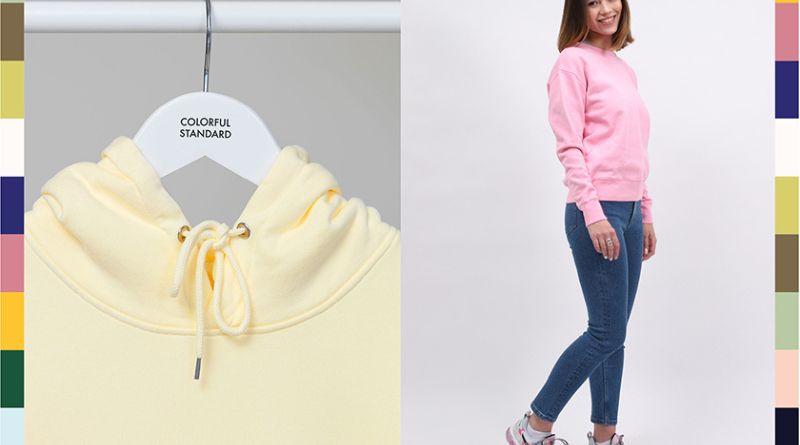Color plays a fundamental role in our daily lives, affecting everything from our emotions to our choices and even our health. It’s an integral part of art, design, fashion, and branding. Among the various concepts surrounding color, “Colorful Standard” stands out as an interesting term, especially in the context of design, fashion, and sustainability. This article will explore what the term “Colorful Standard” means, its impact on different industries, and why it matters in the modern world.
Table of Contents
What Is the Colorful Standard?
The term “Colorful Standard” can be interpreted in different ways depending on the context, but it is commonly used to describe a philosophy or approach to design that prioritizes vibrant, rich colors as a key element of the aesthetic. The phrase may also refer to a company or a movement that encourages diversity and individuality through the use of color, whether in products, marketing, or personal style.
In some cases, the Colorful Standard is associated with the idea of a visual identity that transcends trends, offering a timeless appeal that incorporates bright and lively colors. The use of bold, vivid colors can convey messages of creativity, optimism, and inclusivity, and it can be an important aspect of creating engaging and memorable experiences for people.
Colorful Standard in Fashion and Apparel
One area where the Colorful Standard is particularly visible is in fashion. Fashion designers and clothing brands are increasingly embracing vibrant colors to stand out in a crowded market. From runway shows to streetwear, color is often used to convey personality, culture, and identity.
In fashion, Colorful Standard can also refer to a brand or movement that focuses on producing clothing in a variety of colors, often made from sustainable or ethical materials. Brands that adopt the Colorful Standard typically aim to offer garments in a wide range of hues to appeal to a diverse group of consumers, allowing individuals to express themselves through color choices.
A great example of this would be the fashion label “Colorful Standard,” a brand known for producing high-quality basics in a broad array of colors, while committing to sustainability. This company emphasizes the use of organic cotton and eco-friendly dyeing processes to create products that not only look good but are also better for the environment.
The Role of Color in Design
In design—whether graphic design, interior design, or web design—color is an essential element that shapes how people perceive and interact with a space or product. Color is not just about aesthetics; it’s also about creating the right mood, evoking specific emotions, and influencing behavior.
For instance, warm colors such as red, orange, and yellow can evoke feelings of excitement, warmth, and energy, while cool colors like blue, green, and purple tend to be calming and soothing. Designers often use this psychological understanding of color to make decisions that will resonate with their target audience.
The Colorful Standard in design refers to a conscious decision to use bold, diverse color palettes that defy monotony and encourage creativity. In contrast to minimalistic approaches that may rely on neutral tones or monochrome color schemes, adopting a Colorful Standard can be a way of making a design feel alive and full of energy.
The Psychological Impact of Color
The way we respond to color is largely driven by our emotions and experiences. Colors can evoke strong psychological reactions, which is why they are so important in fields like marketing, branding, and product development. For example:
- Red: Often associated with passion, excitement, and urgency, red is used in sales and promotions to grab attention. It can also stimulate appetite, which is why it’s commonly used in the food industry.
- Blue: This color is linked with trust, calm, and professionalism. Many tech companies, financial institutions, and health brands use blue to create a sense of reliability and competence.
- Yellow: Bright and cheerful, yellow evokes happiness and optimism. It’s often used in marketing to grab attention and create a sense of joy.
The Colorful Standard in branding means embracing these psychological impacts of color to create a strong emotional connection with consumers. Brands that use color effectively can stand out and become more memorable in a competitive market.
Sustainability and the Colorful Standard
Sustainability is becoming a major concern for consumers and businesses alike. As people become more aware of the environmental impact of their choices, many are turning to products that are sustainably produced. The Colorful Standard in this context can be associated with eco-friendly practices that promote vibrant color choices without harming the environment.
Sustainable fashion, for instance, focuses on using natural or organic materials, such as organic cotton, hemp, or bamboo, to create colorful garments. Eco-friendly dyeing processes that use less water and fewer chemicals are also essential in maintaining a Colorful Standard. This balance between vibrant color and environmental responsibility is critical in creating a future where fashion and design are both visually appealing and sustainable.
The Role of Color in Branding and Marketing
In marketing and branding, color is often one of the first elements that a consumer notices. Brands that use a Colorful Standard in their marketing strategies aim to evoke particular emotions, reinforce brand identity, and ensure they stand out in a crowded market. For example, fast-food brands often use red and yellow to stimulate appetite and create urgency, while luxury brands may opt for deep, elegant colors like black or gold to convey sophistication.
The use of color in advertising, packaging, and store displays is a powerful tool in creating memorable experiences for consumers. With a Colorful Standard, marketers can create a visual language that speaks directly to the desires and emotions of their target audience, thereby influencing purchasing decisions.
The Future of the Colorful Standard
As the world becomes more interconnected and diverse, the Colorful Standard is likely to continue evolving. The concept of color will continue to play a major role in how individuals and brands express themselves. In the future, we can expect to see even more innovative uses of color across different industries, from technology to entertainment, and from food packaging to architecture.
The growing demand for sustainability will also drive the development of more eco-friendly color technologies and materials, enabling brands and individuals to enjoy vibrant colors without harming the planet. The future of the Colorful Standard will likely focus on inclusivity, creativity, and environmental responsibility, creating a world where color is celebrated in all its forms.
FAQs
1. What is the Colorful Standard in fashion?
In fashion, the Colorful Standard refers to a design approach where vibrant, diverse colors are prioritized in clothing, often with a focus on sustainability and eco-friendly materials.
2. How does color impact branding and marketing?
Color in branding can evoke strong emotions and help convey a brand’s identity. For example, blue can convey trustworthiness, while red can create excitement. Companies use these psychological effects to influence consumer behavior.
3. What are the psychological effects of colors?
Colors can have a powerful psychological impact. For instance, red stimulates excitement and energy, while blue creates a sense of calm and trust. These emotional responses play a significant role in design and marketing.
4. Can the Colorful Standard be sustainable?
Yes, the Colorful Standard can be sustainable if eco-friendly practices are followed, such as using organic materials, reducing water usage in dyeing processes, and adopting green manufacturing methods.
5. How does the Colorful Standard influence design?
In design, the Colorful Standard refers to the use of bold, diverse color palettes that enhance creativity and energy. It contrasts with minimalist designs and encourages a more dynamic and lively aesthetic.
Conclusion
The Colorful Standard has evolved from a design concept to a philosophy that embraces diversity, creativity, and sustainability. Whether in fashion, branding, or interior design, color plays an essential role in how we interact with the world. By embracing a colorful approach, brands and individuals can express themselves more freely while promoting a sustainable and inclusive future. The Colorful Standard is a celebration of the beauty and power of color in all its forms.






